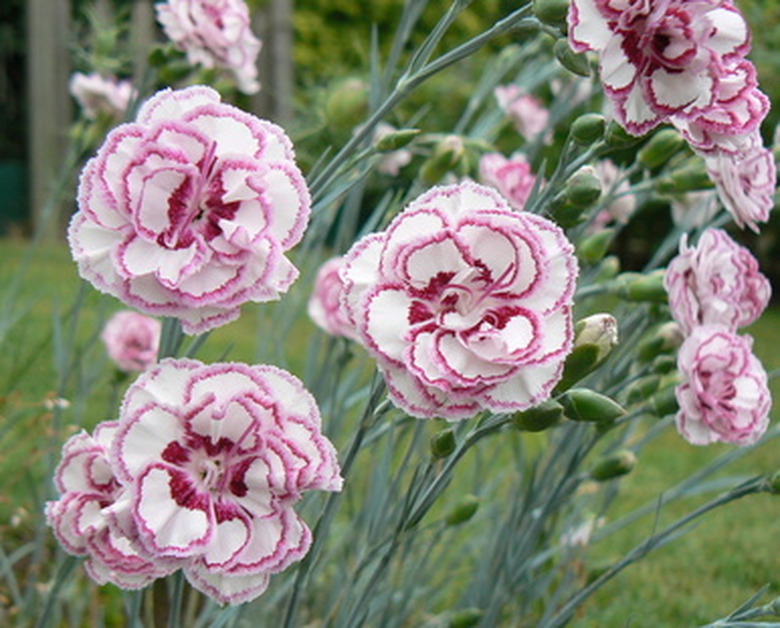How To Winter Carnations
Carnations, or Dianthus, are fairly hardy, short-lived perennial flowers. Prized for their intricate flowers, carnations usually come in white, pink or red hues, but there are some varieties that are more lavender or orange. Carnations are sometimes referred to as annuals, but they aren't true annuals as they do not complete their life cycle in a single year when cared for correctly.. Most carnations live for two to three years before they require replacing, so overwintering the plants properly ensures they live to their full life span.
Step 1
Snip off the dead flowers and any dead or damaged foliage with a sharp set of shears in fall prior to the first frost. Remove all the dead and fallen plant matter from the bed so that diseases do not overwinter in it.
Step 2
Lay a 4-inch layer of mulch over the carnation bed after the first hard frost in fall. Use straw or pine boughs, as these offer protection from winter cold and help maintain the soil temperature, which prevents frost heave to the roots.
- Carnations, or Dianthus, are fairly hardy, short-lived perennial flowers.
- Carnations are sometimes referred to as annuals, but they aren't true annuals as they do not complete their life cycle in a single year when cared for correctly..
- Most carnations live for two to three years before they require replacing, so overwintering the plants properly ensures they live to their full life span.
Step 3
Water the bed as needed to keep it slightly moist throughout winter when the ground is not frozen. In areas with mild winters, carnations may continue to bloom all winter.
Step 4
Remove the mulch in spring when the carnations begin actively growing again. Fertilize with a balanced fertilizer, such as 10-10-10 analysis, at the rate recommended on the fertilizer label. This encourages fresh, healthy growth from the flowers.
Dry Carnations
Carnations are beautiful, frilly flowers that come in a wide variety of colors and sizes. Carnations are a bit more delicate than some flowers, so rather than hanging them up to dry, you'll want to dry them using silica gel. Choose the brightest colors of carnations, since the blooms will loose some of their color during drying. Pick carnations that are close to full bloom, or not quite fully open, for drying. Cut the stems short enough to fit in your container. Cut off any leaves or side stems. Cover the carnations with silica gel, working carefully to avoid crushing the blossoms. Place the dish with the silica gel and carnations in the microwave. Place a cup of water (in a microwave safe container) in the back corner of the microwave. Microwave the carnations for about 3 minutes. ( Let the container cool completely.
- Water the bed as needed to keep it slightly moist throughout winter when the ground is not frozen.
- Choose the brightest colors of carnations, since the blooms will loose some of their color during drying.
Things Needed
- Shears
- Mulch
- Fertilizer
Tip
If rabbits are a problem in your area, pine boughs discourage the pests from eating out of the carnation bed. Potted carnations can be brought indoors and kept in a sunny window throughout winter. Make sure to place them in a warm room and deadhead them often so they bloom at their best.
